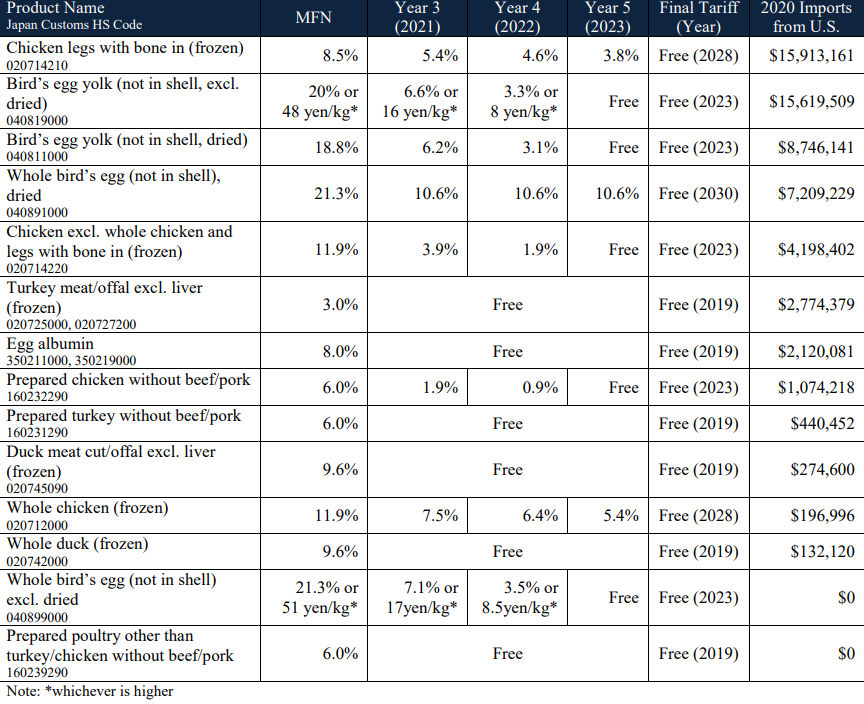The U.S.-Japan Trade Agreement (USJTA) has been in effect for 16 months, however the timing of Japan’s fiscal year meant that the agreement entered “Year 3” of implementation on April 1, 2021, according to USDA’s latest GAIN report. USDA said this report is one in a series of product briefs highlighting the tariff benefits for specific commodities and products from Year 3 (2021) to Year 5 (2023) of the agreement.
In 2020, the United States exported $67 million of poultry and egg products to Japan, making Japan the United States’ sixteenth largest trading market. Japan is a major importer of frozen chicken legs.
The United States accounted for one percent of Japan’s poultry imports and 33 percent of its egg imports. The years below correspond to Japan’s fiscal year beginning April 1.

Poultry meat consumption has risen steadily in Japan over the past several decades. Japan imports around 40 percent of its chicken meat supply with the majority of raw and processed products coming from low-cost suppliers in Brazil, Thailand, and China. Under this agreement, the United States gained a tariff advantage over each of these countries.
USDA’s Economic Research Service (ERS) on Wednesday raised its forecast for U.S. ag exports to a record $164 billion, a $7 billion increase from the ERS February forecast of $157 billion. ERS’s February forecast would also have been a record-setting amount.
Additional information is available at www.usdajapan.org/usjta/.

